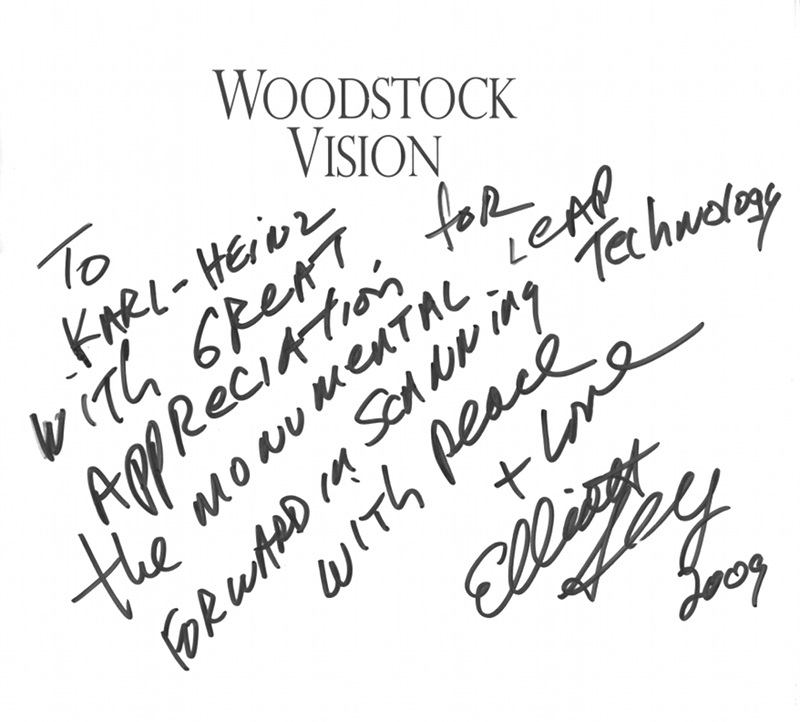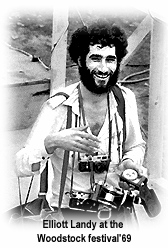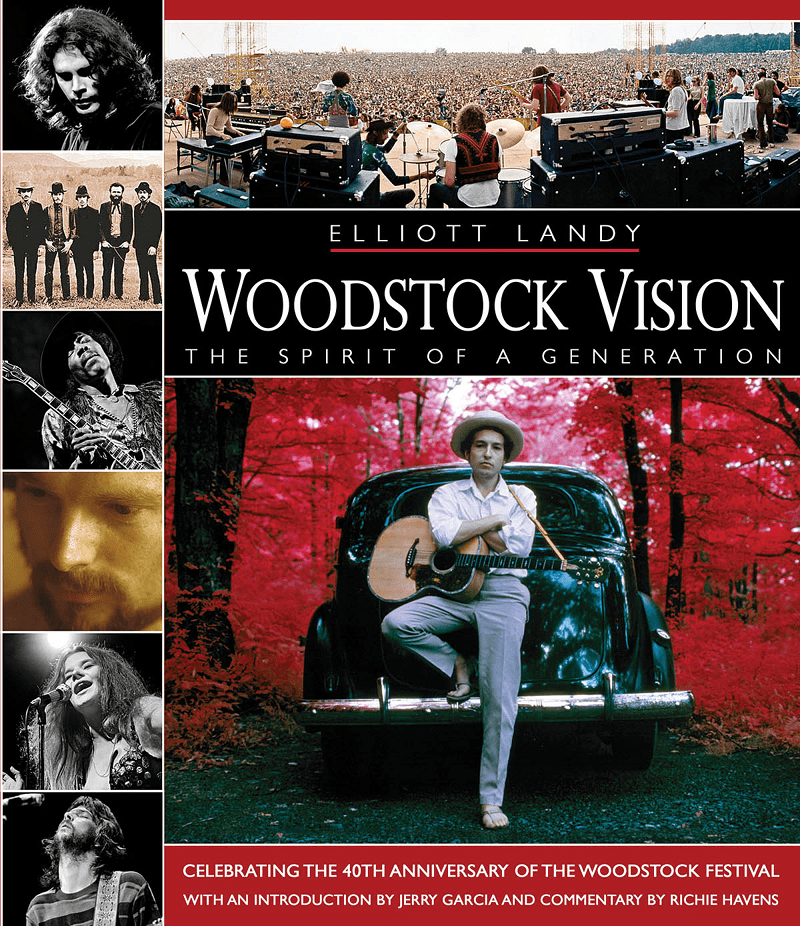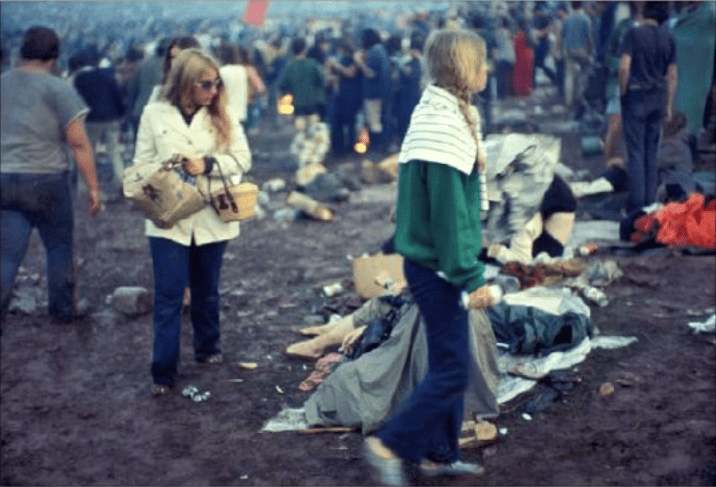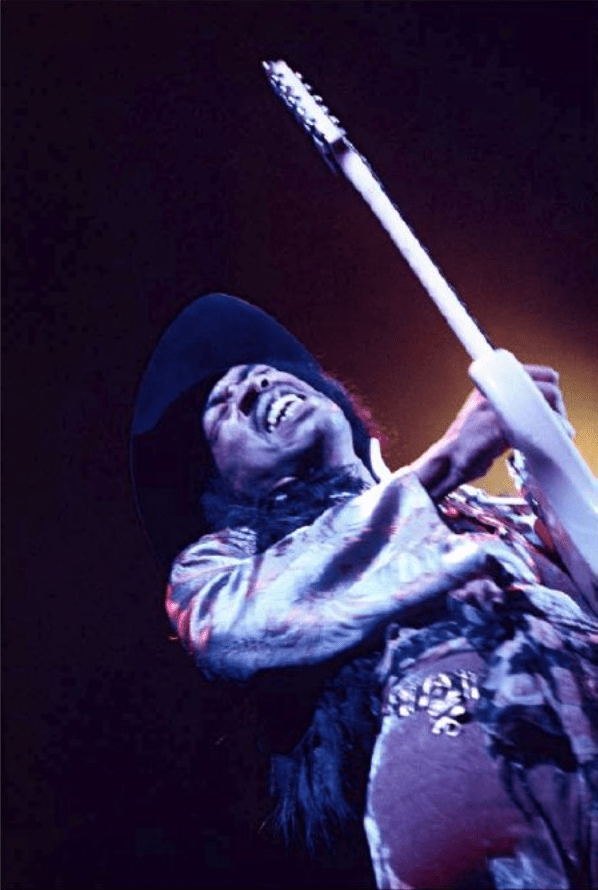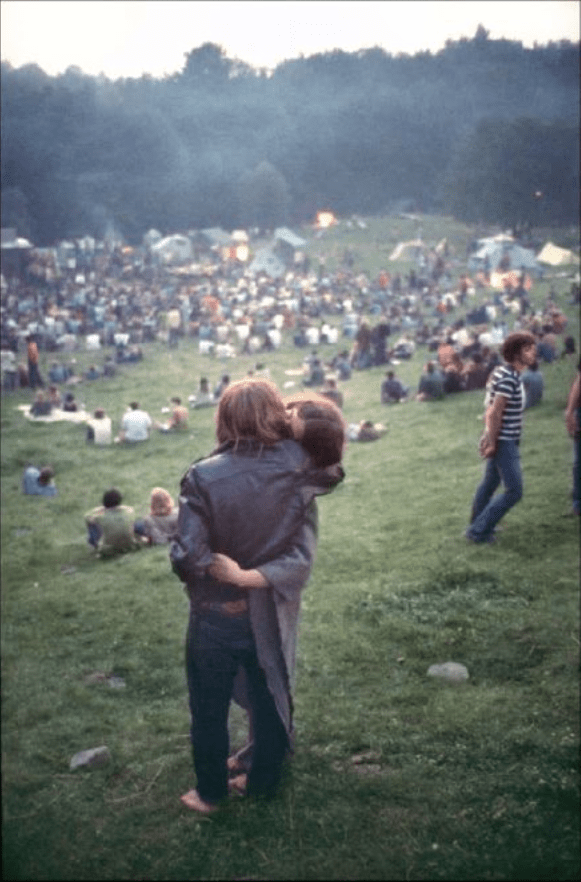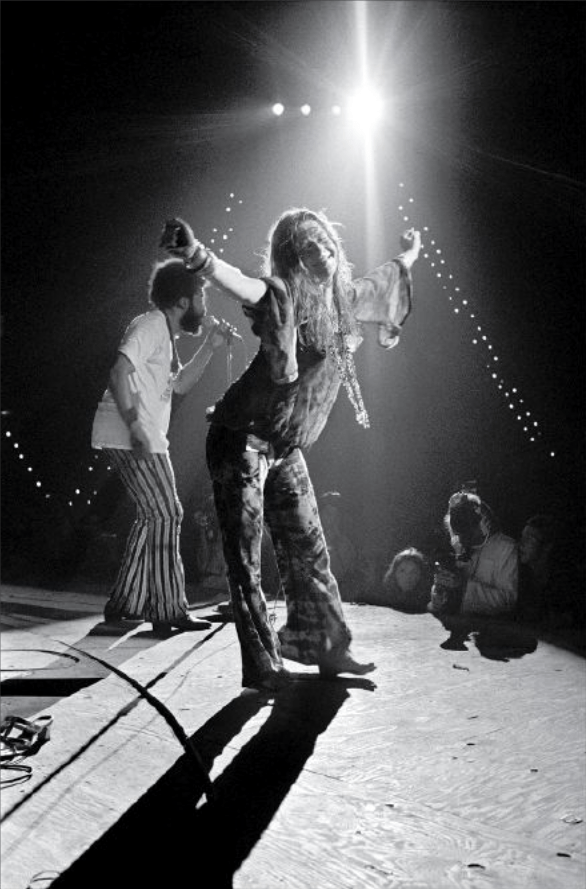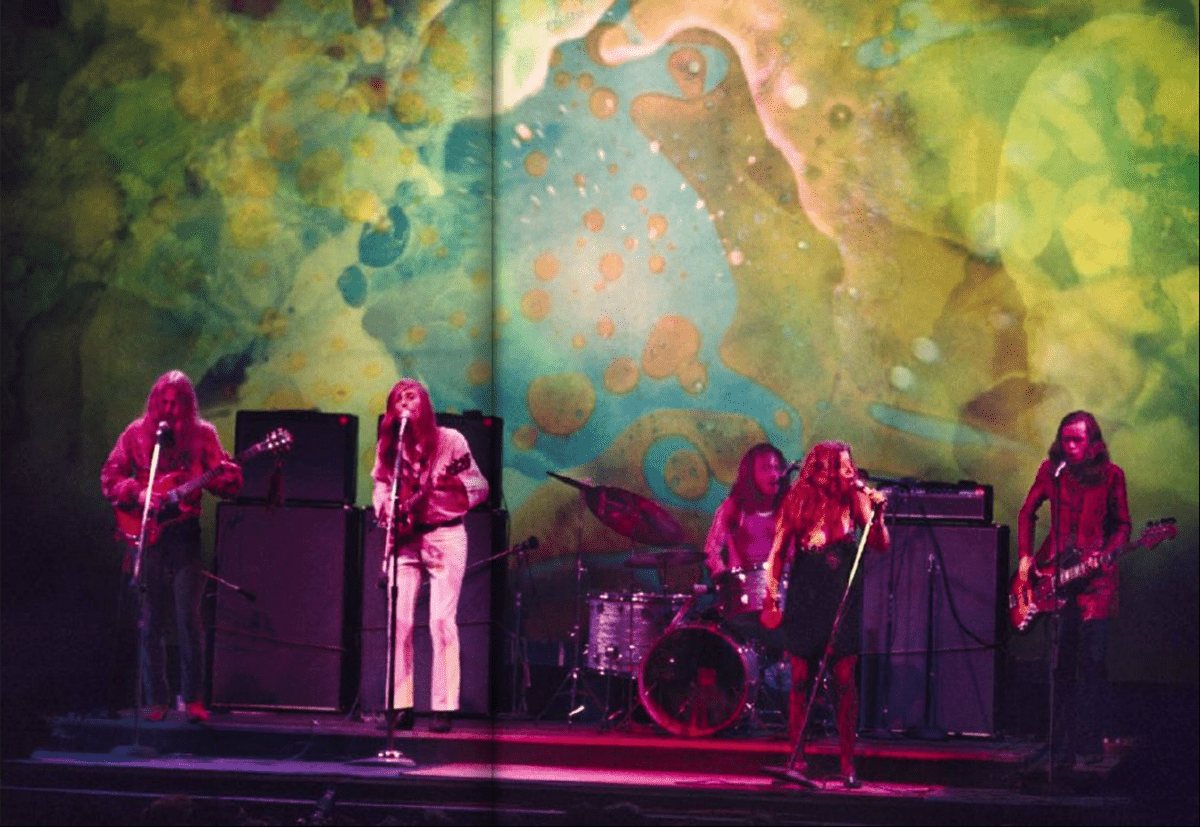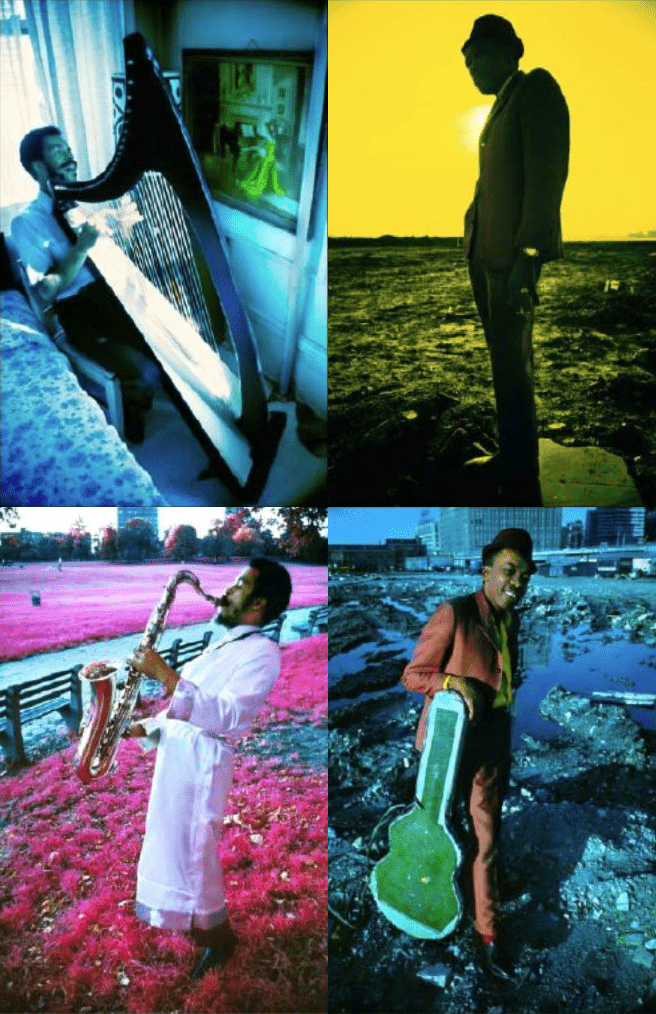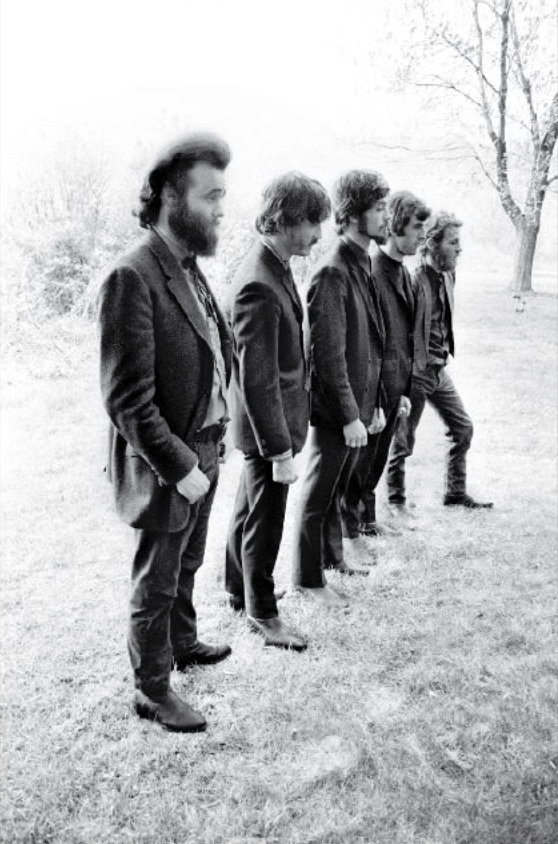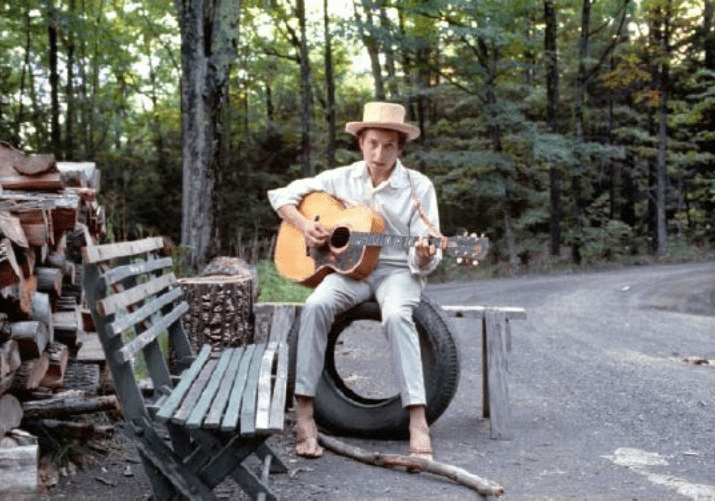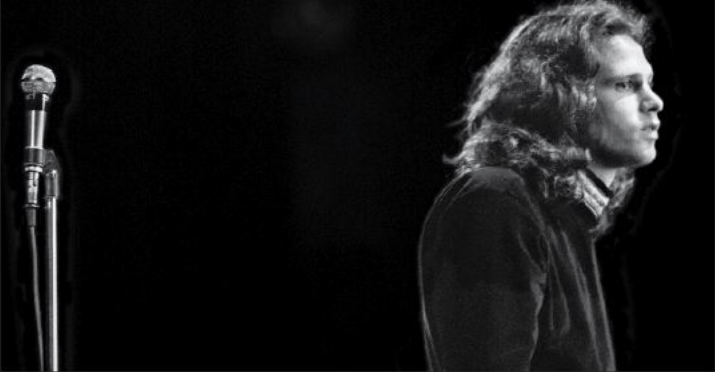Woodstock Festival ’69
Woodstock Music & Art Fair (informally, Woodstock or The Woodstock Festival) was a music festival, billed as “An Aquarian Exposition: 3 Days of Peace & Music”. It was held at Max Yasgur’s dairy farm in the Catskills near the hamlet of White Lake in the town of Bethel, New York, from August 15 to August 18, 1969. Bethel, in Sullivan County, is 43 miles (69 km) southwest of the town of Woodstock, New York, in adjoining Ulster County. During the sometimes rainy weekend, thirty-two acts performed outdoors in front of 500,000 concert-goers. It is widely regarded as a pivotal moment in popular music history. Rolling Stone called it one of the 50 Moments That Changed the History of Rock and Roll. The event was captured in the 1970 documentary movie Woodstock, an accompanying soundtrack album, and Joni Mitchell’s song “Woodstock” which commemorated the event and became a major hit for Crosby, Stills, Nash & Young.
Planning and Preparation
Woodstock was initiated through the efforts of Michael Lang, John Roberts, Joel Rosenman, and Artie Kornfeld. It was Roberts and Rosenman who had the finances. Lang had experience as a promoter and had already organized the largest festival on the East Coast at the time, the Miami Pop Festival, which had an estimated 100,000 people attend the two day event.
In April 1969, newly-minted superstars Creedence Clearwater Revival were the first act to sign a contract for the event, agreeing to play for $10,000. The promoters had experienced difficulty landing big-name groups prior to Creedence committing to play. Creedence drummer Doug Clifford later commented “Once Creedence signed, everyone else jumped in line and all the other big acts came on.” Woodstock was designed as a profit-making venture, aptly titled “Woodstock Ventures”. It famously became a “free concert” only after it became obvious that the event was drawing hundreds of thousands more people than the organizers had prepared for. Tickets for the event cost $18 in advance (equivalent to $75 in 2009 after adjusting for inflation). Ticket sales were limited to record stores in the greater New York City area, or by mail via a post office box at the Radio City Station Post Office located in Midtown Manhattan. Around 186,000 tickets were sold beforehand and organizers anticipated approximately 200,000 festival-goers would turn up.
Selection of the venue
The concert was originally scheduled to take place in the 31.2 km2 Mills Industrial Park in the town of Wallkill, New York, which Woodstock Ventures had leased for $10,000 in the Spring of 1969. Town officials were assured that no more than 50,000 would attend. Town residents immediately opposed the project. In early July the Town Board passed a law requiring a permit for any gathering over 5,000 people. On July 15, 1969, the Wallkill Zoning Board of Appeals officially banned the concert on the basis that the planned portable toilets would not meet town code. Reports about the ban, however, turned out to be a publicity bonanza for the festival. The organizers once again told Bethel authorities they expected no more than 50,000 people. Despite resident opposition and signs proclaiming, “Buy No Milk. Stop Max’s Hippy Music Festival”, Bethel Town Attorney Frederick W. V. Schadt and building inspector Donald Clark approved the permits, but the Bethel Town Board refused to issue them formally. Clark was ordered to post stop work orders.
Free concert
The late change in venue did not give the festival organizers enough time to prepare. At a meeting three days before the event, organizers felt they had two choices. One option was to improve the fencing and security which might have resulted in violence; the other involved putting all their resources into completing the stage, which would cause Woodstock Ventures to take a financial hit. The crowd, which was arriving in greater numbers and earlier than anticipated, made the decision for them. The fence was cut the night before the concert.
The festival
The influx of attendees to the rural concert site in Bethel created a massive traffic jam. Fearing chaos as thousands began descending on the community, Bethel did not enforce its codes. Eventually, announcements on radio stations as far away as WNEW-FM in Manhattan and descriptions of the traffic jams on television news programs discouraged people from setting off to the festival. To add to the problems and difficulty in dealing with the large crowds, recent rains had caused muddy roads and fields. The facilities were not equipped to provide sanitation or first aid for the number of people attending; hundreds of thousands found themselves in a struggle against bad weather, food shortages, and poor sanitation.
Although the festival was remarkably peaceful given the number of people and the conditions involved, there were two recorded fatalities: one from what was believed to be a heroin overdose and another caused in an accident when a tractor ran over an attendee sleeping in a nearby hayfield. There also were two births recorded at the event (one in a car caught in traffic and another in a hospital after an airlift by helicopter) and four miscarriages.
Yet, in tune with the idealistic hopes of the 1960s, Woodstock satisfied most attendees. There was a sense of social harmony, which, with the quality of music, and the overwhelming mass of people, many sporting bohemian dress, behavior, and attitudes helped to make it one of the enduring events of the century. After the concert, Max Yasgur, who owned the site of the event, saw it as a victory of peace and love. He spoke of how nearly half a million people filled with possibilities of disaster, riot, looting, and catastrophe spent the three days with music and peace on their minds. He states that “if we join them, we can turn those adversities that are the problems of America today into a hope for a brighter and more peaceful future…”
Source: Wikipedia
